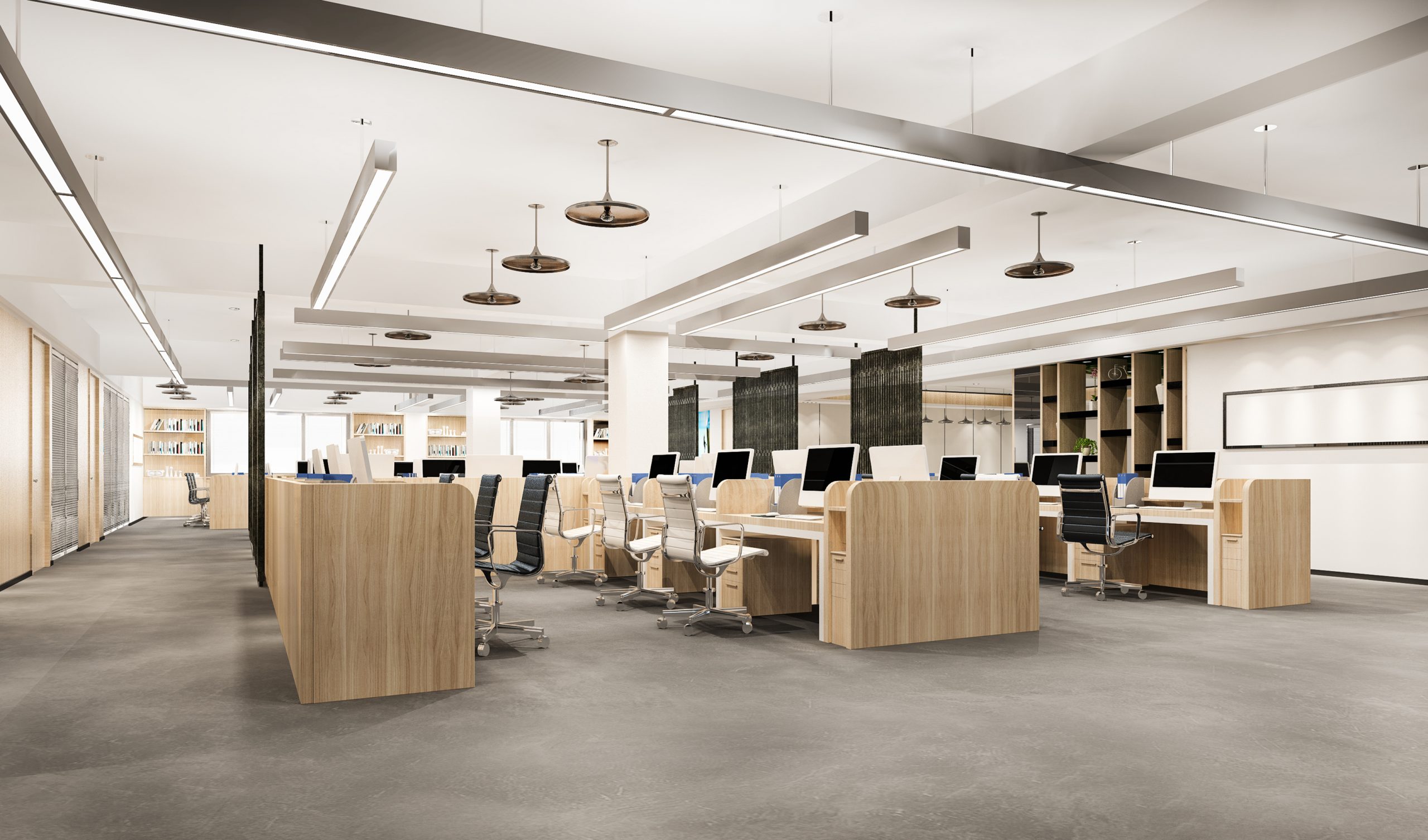- Workplace
- Offices

What is a hybrid workplace model and how does it work?
A hybrid workplace model mixes in-office and remote work to offer flexibility and support to employees. In a hybrid workplace, employees typically enjoy more autonomy and better work-life balance – and are more engaged as a result. Employers benefit by building a more productive, healthy, stable workforce.
What is a hybrid workplace model?
The hybrid workplace model combines remote workers with on-site workers, with some or all employees having the flexibility to choose where and when they work. In-office time may be allocated by days or by teams, or on an as-needed basis. Where and when work gets done will be determined by what makes the most sense to drive the highest levels of productivity and engagement.

The hybrid model isn’t a fit for every workplace or every industry, it’s best suited to employees whose work is computer-based and doesn’t need to be performed on site. A recent report looked at remote work that can be done without loss of productivity. It determined that “about 20% to 25% of the workforces in advanced economies could work from home between three and five days a week. This represents four to five times more remote work than before the pandemic.”
The hybrid workplace model is not a temporary model, or a stop-gap, instead it’s the future of work and of agile, resilient workplaces.
Why the hybrid workplace is the developing norm
The move towards remote and hybrid work was happening long before the pandemic, but, as with so many things, COVID-19 accelerated the transition. Businesses had to quickly overcome a myriad of challenges, from providing the right tools to managing productivity and morale in a dispersed team environment. After a few months, however, it was clear that there was no going back – because employees preferred this new, more flexible way of working.
Now that some employees are reentering traditional office settings – at least some of the time – businesses can benefit from lessons learned from their remote work experiences. The goal is to design a hybrid work model that best suits their specific needs.
Modern HR technologies are easing the shift to hybrid work by making it possible to gather, manage, and analyze data from all teams, regardless of location. Technology can support employee onboarding, upskilling and reskilling, and, when used effectively, it also gives employees access to everything they need during their employee journey – from collaboration tools to cloud technologies.
The ideal “new normal” is an inclusive hybrid workplace where all employees – no matter where they’re working – are productive, engaged, and feel connected and included.
Benefits of a hybrid work environment
A hybrid workplace with a people-first approach to employee experience takes advantage of evolving HR technologies to become flexible, agile, and productive.
- Increased employee productivity: A number of factors contribute to boosts in productivity: increased autonomy to choose work hours and location; fewer interruptions at home than in the office; repurpose commuting time; and the opportunity to come into the office at times when in-person collaboration is best.
- Reduced overhead costs: Companies are looking at their real estate strategies and opportunities to reduce office space or move their offices to smaller cities – all of which can lower overhead. Hybrid employees tend to be more engaged, which leads to less turnover and also reduces costs.
- Better employee experience and work-life balance: Greater flexibility and autonomy increases job satisfaction and happiness, which improves performance at work as well as overall employee well-being. An integrated focus on work-life balance helps create a successful hybrid workplace.
- Improved safety and social distancing: With COVID-19 variants predicted to be an ongoing threat, the hybrid workplace model allows for office space to be designed to emphasize safety and sanitization. Mixing and matching who is in the office – and when – allows space for social distancing and increased cleaning, which also makes it easier if there is a need to perform contact tracing.

Challenges of managing hybrid teams
Every organization will face somewhat different challenges in making a hybrid work model successful. Below are some of the most common challenges facing hybrid team leaders today:
- Developing the right hybrid model: Because there are so few established hybrid workplace models to follow, each company must design and develop a model specific to their needs. This approach may also need to be iterative as different combinations and technologies are tried and tested to find the best fit for each company’s unique situation and culture.
- Increased security risks: As companies move towards hybrid models security will continue to be a risk and a concern. With employees working from home using their own networks, and potentially their own devices, HR and IT departments will need to focus on end-user education and security.
- Managing people effectively: In a hybrid workforce, managers must take care to ensure that both on-site and remote workers have the same opportunities and exposure, including evaluations that are based upon work product rather than work process. It is important to ensure that remote team members do not feel isolated or unseen – and likewise, that they are subject to the same expectations and accountability as their colleagues in the office.
- Employee isolation and disconnection: HR teams will have to focus on keeping employees feeling connected when their staff is working from anywhere at anytime. Developing “virtual water cooler” opportunities and other chances for employees to interact and connect in non-physical settings will be key to designing a healthy hybrid workplace. As will being able to use technology to take the pulse of the workforce and course correct as needed.
- Creating seamless connectivity: To avoiding disparities, silos, and knowledge loss, businesses need to develop barrier-free connectivity that allows hybrid teams to communicate quickly and efficiently. Maintaining a thriving company culture has to be an intentional goal in a hybrid workplace model.
-
6 ways to make an office space visually appealing.
30 January 2023 -
Dilemma: New vs Old Construction
10 January 2023 -
Modern office spaces trends
13 September 2023 -
What makes the perfect office?
15 April 2024 -
The Role of Technology in Modern Office Spaces
23 July 2024 -
Color Trends in Interior Design in 2023
06 July 2023 -
Picking the Perfect Location for Your Business
07 November 2023 -
Работа од дома или работа од канцеларија?
01 February 2024 -
Why holiday spirit is so important at the workplace?
12 December 2023 -
What is a hybrid workplace model and how does it work?
23 November 2022
















